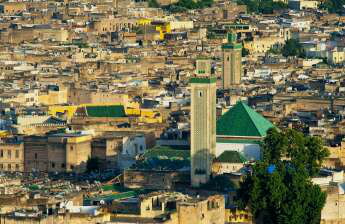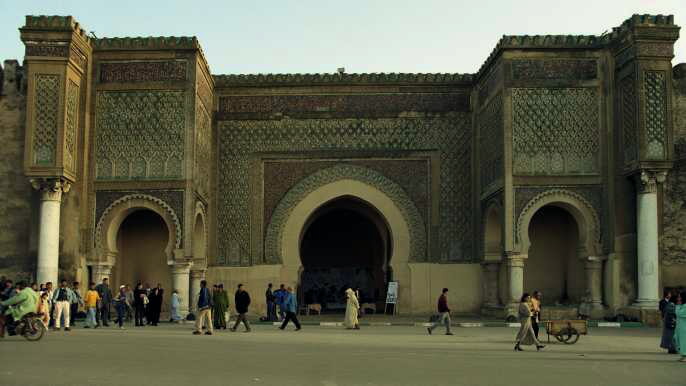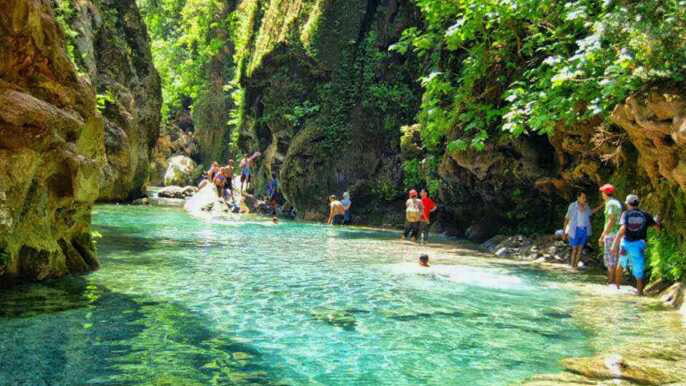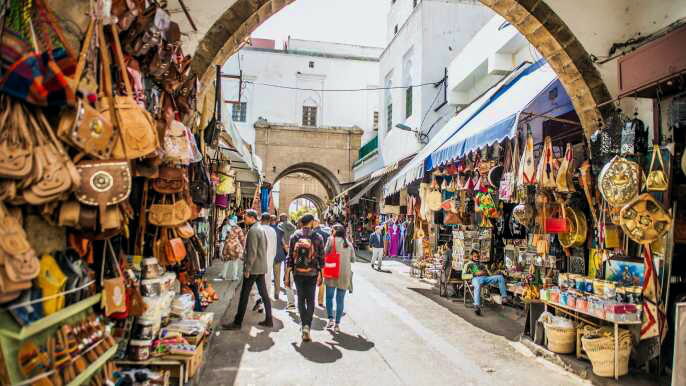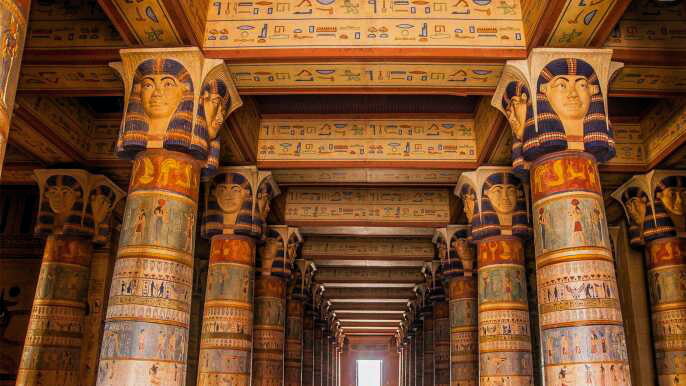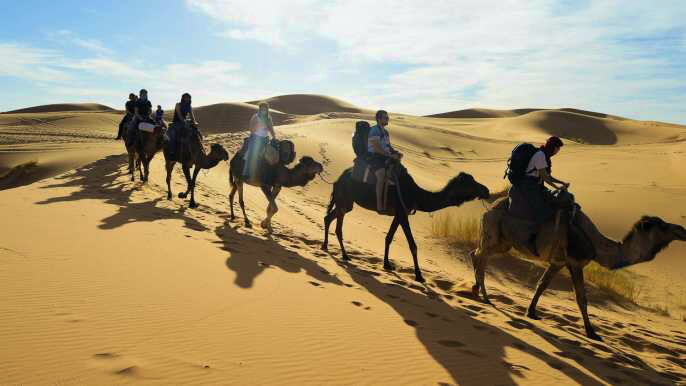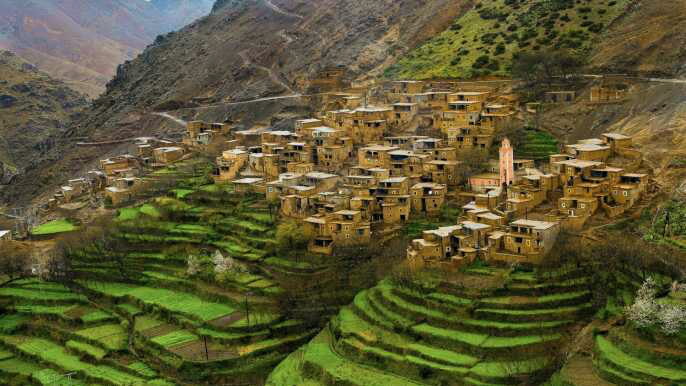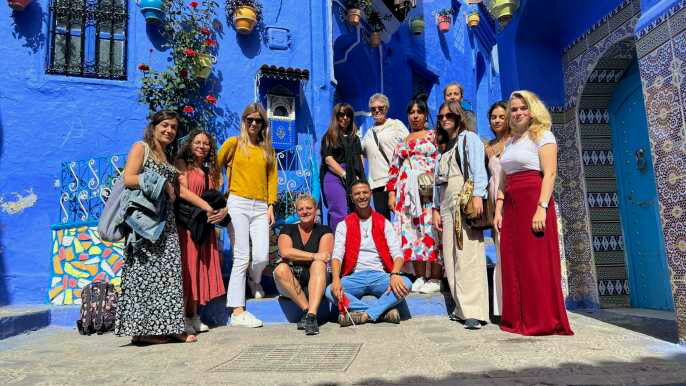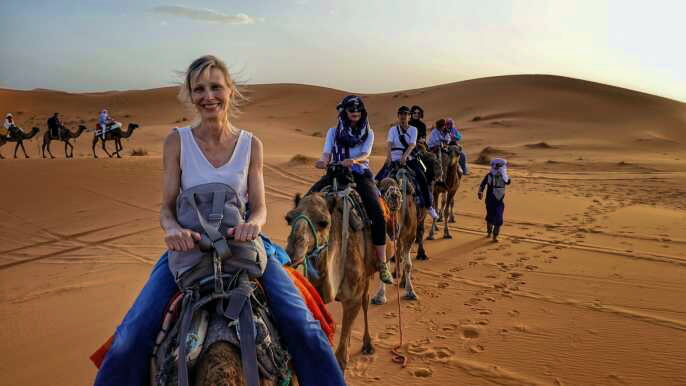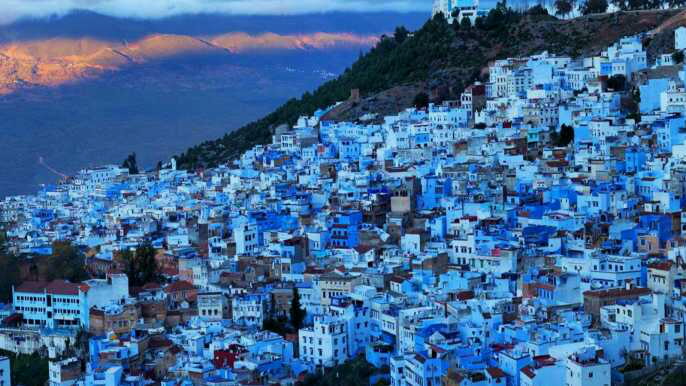A northeastern Moroccan city often referred to as the country’s cultural capital, Fes is known for its walled medina with medieval Marinid architecture and vibrant souks.
The medina is a UNESCO World Heritage Site and is one of the world’s largest car-free urban areas, so walking here is like stepping back in time. It’s also home to some of the most beautiful religious buildings in Fes such as Bou Inania and Al Attarine Madrasa.
Kairaouine Mosque
The Kairaouine Mosque (also known as Al-Qarawiyyin Mosque and University) is one of the most important spiritual and educational centers of the Muslim world. Founded in 859 by Fatima El Bint Mohamed Ben Abdellah el Fihri, a pious woman from Kairouan, it was built to both serve as a mosque and to teach Qu’ran memorization.
Initially, the Al-Qarawiyyin taught only Qu’ran and Fiqh but as time went by courses in grammar, medicine, music, Sufism, astronomy, mathematics and history were offered. As a result, the Kairaouine Mosque became an institution of learning and a destination for scholars from all over Morocco and the Middle East.
Today, the Kairaouine Mosque is a major attraction and is an excellent place to spend some free time in Fes. But to get a more immersive experience, we recommend booking a tour with our travel experts.
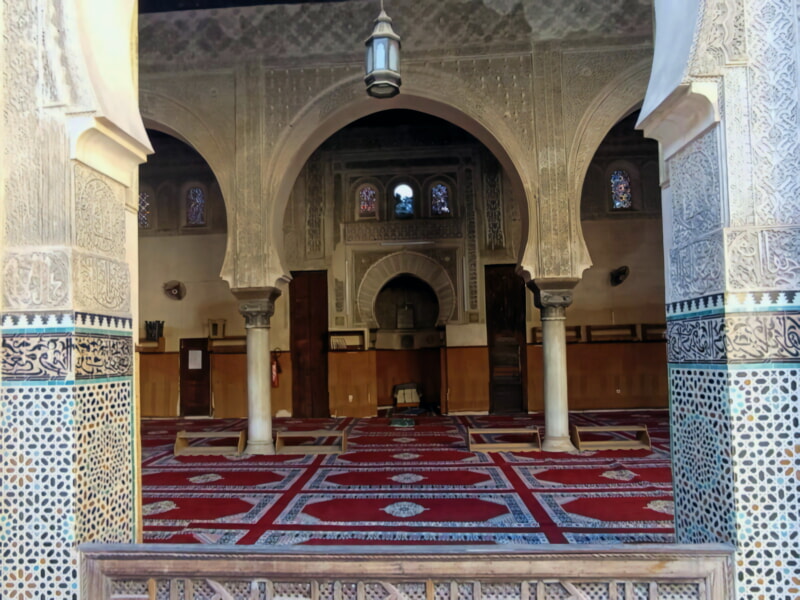
Bou Inania Medersa
The final Merenid madrasa to be built by Sultan Abou Inan (1351-58), Bou Inania is the most stunning building in Fez and one of the most beautiful in Morocco. Its interior courtyard is a masterpiece of elaborate zellige tilework, carved plaster and beautiful cedar lattice screens.
It is the only madrasa still in use as a mosque that non-Muslims are permitted to enter. The mihrab niche has onyx columns and echoes the Great Mosque of Cordoba.
The madrasa is set in a huge marble courtyard surrounded by two halls and an oratory. The upper floor is occupied by the original student quarters.
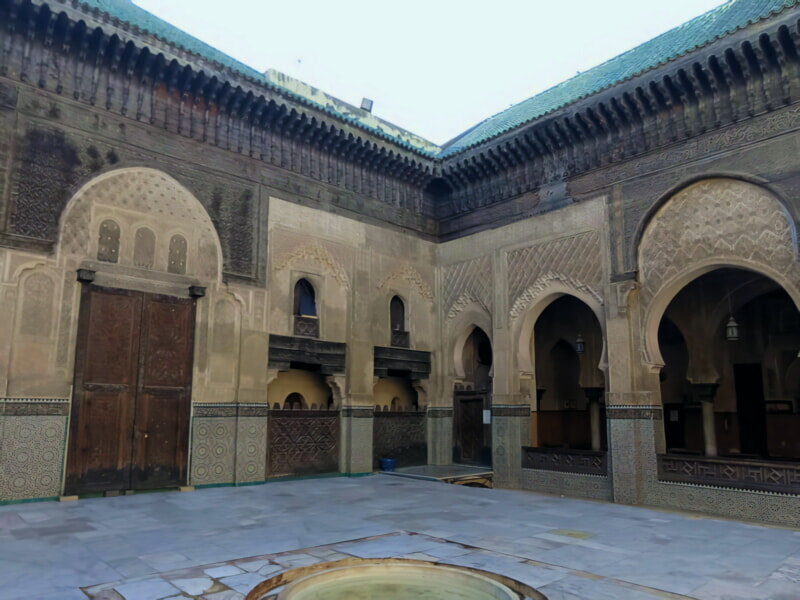
Bab Bou Jeloud
The imposing Bab Bou Jeloud is one of the most iconic gates to Fes el Bali, Morocco's ancient medina. Built in 1913, it is a stunning example of Moorish architecture and the city's unique history.
A popular photo spot, it's worth a visit for photographers, Instagrammers, and people-watchers alike. It's also a great place to soak up the lively atmosphere of Fez Medina, teeming with artisan shops and traditional eateries.
Bab Bou Jeloud is also home to a small hotel, which provides excellent service and a fantastic location. This hotel is a 4-minute walk from Bab Guissa and 8 minutes by foot from Nejjarin Fondouk.

Borj Nord
If you're looking for a vantage point from which to admire the Medina, Borj Nord is a must-see. It's a 16th century fort designed by the Saadi Sultans and is modeled after Portuguese forts.
Today, Borj Nord houses the Museum of Arms which displays a collection of weapons from around Morocco and beyond. Gilded sword hilts, jagged daggers and rifle butts glittering with precious stones make for an enchanting display.
One of the most curious things about Fez's borjies is their radical difference in design. The sleek, classic starfort of Borj Nord is a world apart from the shardfort of Borj Sud.
Mellah
The UNESCO-protected Mellah of Fes is a historic quarter that was once the centre of Jewish life in Morocco. It was established in 1438 as a means to separate and protect the growing Jewish community from the rest of the city’s inhabitants.
This imposing and handsome neighbourhood, with its enclosed hanging balconies, reveals intriguing history to those willing to look. Highlights include the atmospheric cemetery and 17th century Ibn Danan Synagogue.
Though not entirely inhabited today, the Mellah is one of the best places to explore the history of Jewish tradition in Morocco. The area has several reminders of its past presence, and you may find it surprising how different it is to the majority Muslim neighbourhoods that you see in Fes.
